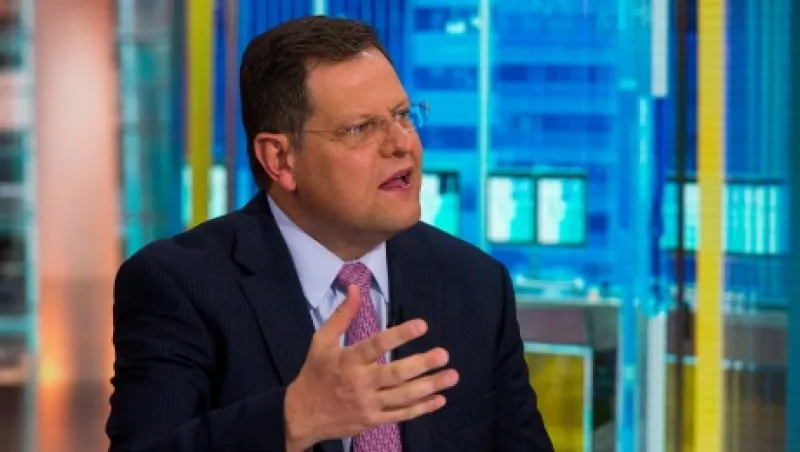If your business involves transporting Mexicans cheaply across the U.S. border, you could be forgiven for being discouraged by the American political debate. With Donald Trump and Ted Cruz each promising to build a wall to secure the border, about the only bright spot in the Republican primary campaign is the fact that the Texas senator hasn’t disparaged Mexican immigrants as drug-dealing rapists.
Yet nasty campaign rhetoric fails to dim the irrepressible optimism of Enrique Beltranena, CEO of the low-cost Mexican carrier Volaris. Since its founding a decade ago, the airline, formally named Controladora Vuela Compañía de Aviación, has grown rapidly and now controls roughly a quarter of the Mexican air passenger market, both domestically and internationally. And the international routes — principally to the U.S. but now beginning to branch into Central and South America — are the fastest-growing part of the business.
“We started with the idea of doing something really disruptive,” Beltranena said in a recent interview at Institutional Investor’s offices in New York, after meeting with investors. “We are the first successful ultra-low-cost carrier in Latin America.”
Launched by the Mexican private equity firm Discovery Americas with backing from billionaires telecom tycoon Carlos Slim and media baron Emilio Azcárraga, Volaris took to the skies in 2006 with a plan drawn from the playbook of Southwest Airlines: Focus on point-to-point routes rather than expensive hub-and-spoke operations, undercut incumbents Aeroméxico and Mexicana de Aviación and grow the market. Beltranena, who led a five-way merger in the 1990s that created the Central American carrier TACA Airlines (now part of Colombia’s Avianca Holdings), has captained Volaris from the get-go and executed that plan brilliantly.
Although Mexico’s airline market suffered a massive shakeout and Mexicana filed for bankruptcy in 2010, Volaris went from strength to strength. It leased its first Airbus A320 in 2008, opened its first U.S. route (to Los Angeles) the following year and took advantage of Mexicana’s demise to push its way into Mexico City International Airport in 2010. The company fueled its growth with an initial public offering on the New York and Mexico City stock exchanges in 2013 that raised $346 million. (Slim and Azcárraga have sold their stakes, but Discovery Americas is still a major investor, with a 14 percent stake.)
The results are impressive. The company’s revenue grew at a compound annual rate of 20 percent from 2011 to 2015, reaching 18.18 billion pesos ($1 billion) last year; net income rose fourfold last year, to 2.5 billion pesos. Volaris carried just under 12 million passengers last year, up 22.2 percent from 2014 and nearly two thirds of market leader Aeroméxico’s total. The company now provides service from 40 Mexican airports to 20 in the U.S., as well as to Guatemala City; San José, Costa Rica; and San Juan, Puerto Rico. Although competition has heated up from Aeroméxico as well as rival Mexican discount carriers VivaAerobus, partly owned by the family behind Ireland’s Ryanair, and Interjet, Volaris reported a 41.7 percent jump in international passenger traffic in the first two months of this year and a 7.1 point increase in load factor on those routes, to 85.5 percent. At $20.88 on April 5, the company’s American depositary receipts had gained 88 percent over the past 12 months and were up 74 percent from the IPO price of $12.
Beltranena isn’t letting the success go to his head. He believes the company is still early in its ascent phase. The real competition for Volaris is bus operators, not other airlines. Mexicans took 2.7 billion domestic trips by bus last year and only 37 million by plane. Bus trips of 24 hours or more to visit friends or relatives across Mexico and far into the U.S. are commonplace. The country’s growing middle class — “the best-kept secret in Mexico,” said Beltranena — is just waiting to be lured on board if the price is right.
That’s why Beltranena remains laser-focused on cost. Under the slogan “Avión a precio de camión” — The plane at the price of a bus — Volaris keeps fares at rock-bottom levels while offering an array of added services, everything from reserving a specific seat or allowing extra baggage for a fee to selling food and, soon, rental cars. Ancillary services generated 22 percent of revenue last year, up from 14 percent in 2013.
The CEO aims to boost capacity 50 percent by 2020 by expanding his fleet to at least 90 aircraft, from 59 currently, and phasing out 160-passenger A319s for A321 models with 230 or more seats. “We think the economy in Mexico is pretty healthy,” he said. “Consumption rates are pretty good.” Beltranena vows not to sacrifice margins for growth. So far, he’s been good to his word. The company boosted its operating profit margin by 3.6 percent points last year, to 14.4 percent, and Michael Linenberg, an analyst at Deutsche Bank, predicts margins will continue to grow this year even as Volaris expands capacity.
The main risks are a possible rebound in oil prices, weakness in the peso — and potentially politics. Donald Trump has aroused anger and worry south of the border with his disparaging comments about Mexicans and his promise to have Mexico pay for his massive wall.
“I am concerned,” said Beltranena. “It’s difficult not to be concerned.” But the CEO wanted it to be known that his airline “has grown by transporting legal people,” he said. In addition, if Trump is half the businessman he claims to be, he should recognize what Volaris has achieved in just one decade, he added. “If he would know my team, the way they perform, he would buy our stock,” said Beltranena.
As for the prospect of a border wall, Beltranena can’t suppress a glint in his eye. After all, if your business plan is based on getting people off the bus and onto your planes, a wall may have a silver lining.






